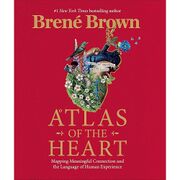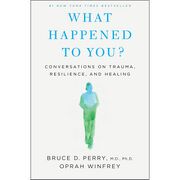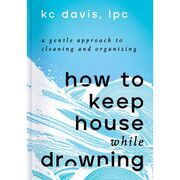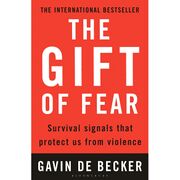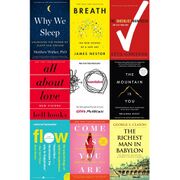Reasons to Stay Alive
🍎 Healthy brain food
"There is this idea that you either read to escape or you read to find yourself."
— Matt Haig, Reasons to Stay Alive (2015)
Introduction
| Reasons to Stay Alive | |
|---|---|
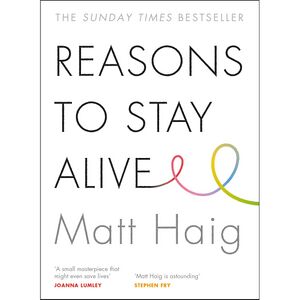 | |
| Full title | Reasons to Stay Alive |
| Author | Matt Haig |
| Language | English |
| Subject | Depression; Anxiety disorder; Mental health |
| Genre | Nonfiction; Memoir; Self-help |
| Publisher | Canongate |
Publication date | 5 March 2015 |
| Publication place | United Kingdom |
| Media type | Print (hardcover, paperback); e-book; audiobook |
| Pages | 264 |
| ISBN | 978-1-78211-508-3 |
| Goodreads rating | 4.2/5 (as of 6 November 2025) |
| Website | canongate.co.uk |
📘 Reasons to Stay Alive is a 2015 nonfiction memoir by British author Matt Haig that recounts his severe depression and anxiety and how he learned to live again. It was published in the United Kingdom by Canongate on 5 March 2015; a U.S. edition followed from Penguin Books in 2016.[1][2] Stylistically, the book blends brief vignettes, lists, and “conversations across time” in a non-linear sequence meant to be dipped into rather than read straight through.[3] The book became a number-one Sunday Times bestseller and remained in the UK top ten for 49 weeks; it was later adapted for the stage in 2019 by Sheffield Theatres and English Touring Theatre.[4][5]
Chapter summary
This outline follows the Canongate hardcover first edition (5 March 2015; ISBN 978-1-78211-508-3).[1][6]
🕳️ 1 – Falling. On a September day in Ibiza, 24-year-old Matt Haig walked from a quiet villa toward a seaside cliff, counting the steps he thought would end the pain. For three sleepless days he had lain in a hot room while his girlfriend, Andrea, brought water and fruit, the window propped open for air. Outside, the scent of pine and salt hung in the heat, the Mediterranean glittered below, and the cliff edge sat fewer than twenty paces away—he even set a target of twenty-one steps. The fear of death never vanished, but the agony of staying alive felt heavier, and he hovered at the brink, mustering courage first to die and then, unexpectedly, to live. Thoughts of his parents, sister, and Andrea—the love that would be left behind—pulled him back, and the release made him retch from stress. The first hours of breakdown come as a racing heart, a tingling at the back of the skull, panic’s suffocation, and the shock of discovering an illness others cannot see. Depression can be invisible from the outside yet catastrophic within, widening the gap between appearance and reality. In brief fragments, the section maps the drop from functioning adult to someone who can barely stand, naming the terror without clinical jargon. Extreme distress narrows attention until life feels binary—end it or endure it. Connection and time reopen the tunnel, and the project of collecting reasons to keep going begins with a single refusal to step forward.
🛬 2 – Landing. Back in England after the cliff-edge crisis, “Cherry blossom” uses a brief bloom to mark that life continues beyond the sealed room of panic. “Unknown unknowns” admits how little is clear in early recovery, when simple choices feel perilous and time stretches. “The brain is the body – part one” grounds experience in physical alarms—racing heart, dizziness, tight chest—treating symptoms as signals, not failings. “Warning signs” catalogs patterns that precede a spiral and invites small, preemptive adjustments instead of grand plans. In “Jenga days,” a stack of ordinary tasks becomes a tower that can topple with a nudge, a concrete picture of fragility that also hints at rebuilding one block at a time. Short, scene-like pieces name fears (“Demons”) and widen back to meaning (“Existence”), tracing a path from sensation to thought to choice. Movement is spatial as well as emotional: from bed to doorway, to the end of the street, to the first unaccompanied errand. Incremental exposure, paired with clear labeling, shrinks goals until the nervous system relearns safety and repetition removes the surprise. As lists and fragments accumulate, “landing” becomes the hinge between survival and rebuilding, where noticing one ordinary bloom is enough reason to try again tomorrow.
🌅 3 – Rising. Two mirrored lists—“Things you think during your first panic attack” and “Things you think during your 1,000th panic attack”—contrast catastrophe with familiarity to show how knowledge alters the same symptoms. Early on, a pounding heart reads as death; with repetition, it becomes a surge that crests and falls. “The art of walking on your own” turns solo walks into training, pacing past storefronts and side streets until leaving the house no longer feels like a cliff. A recurring “conversation across time” has the older voice calmly briefing the younger on what passes and what helps. Love and practical steadiness—especially Andrea’s—reappear not as fixes but as conditions that make practice possible. The toolbox grows modestly: daylight, movement, steady breaths, a page of words; none abolish fear, but together they blunt its edge. Progress shows up as stretches of ordinary focus—reading, a day’s work, an evening without scanning for symptoms—rather than a dramatic cure. Through exposure and prediction error, the body learns the feared event never arrives and the mind updates its story. “Rising” is less flight than accumulation—more tolerable minutes, more streets walked, more evidence that a life can hold fear without being ruled by it.
🌱 4 – Living. “The world” widens the frame from one illness to the social weather that keeps minds on edge, and “Mushroom clouds” shows how worst-case images and headlines seep into daily attention. “The Big A” names anxiety outright, separating it from depression while acknowledging how tightly they braid. In “Slow down,” the pages turn practical, favoring small, repeatable acts over dramatic cures. “Peaks and troughs” maps mood as a rolling landscape rather than a line, encouraging plans that include dips as part of the terrain. A brief “Parenthesis” offers white space by design, while “Parties” captures the strain of public gatherings when the nervous system is already overclocked. The section tagged “#reasonstostayalive” builds a running list of ordinary anchors—relationships, sensations, future moments—as counterweights when thoughts tilt toward catastrophe. Two inventories close the loop: “Things that make me worse” and “Things that (sometimes) make me better,” a candid audit that makes self-management concrete. The through line is modest, durable living—sleep, daylight, movement, conversation—stacked consistently enough to change the week, not just the hour. Behavioral activation and attention training work together: do what reliably steadies the body on purpose, and let mood follow the structure.
🧘 5 – Being. “In praise of thin skins” reframes sensitivity as useful signal, not flaw, then “How to be a bit happier than Schopenhauer” glances at the pessimist to argue for everyday antidotes over metaphysical fixes. “Self-help” interrogates easy promises while salvaging what helps—clear names, small actions, hopeful examples. “Thoughts on time” sets recovery on season-length horizons rather than days, asking for patience with a brain that updates slowly. “Formentera” returns to the Balearics to show how a place can be re-encoded by a different day, a different walk, a different breath. “Images on a screen” challenges social media’s flattening performances, and “Smallness” looks to cosmic scale to dilute rumination. A practical list—“How to live (forty pieces of advice I feel to be helpful but which I don’t always follow)”—breaks guidance into humane, negotiable steps, followed by “Things I have enjoyed since the time I thought I would never enjoy anything again,” a ledger of returned pleasures that doubles as exposure homework. It treats life as practice, not verdict: keep the body moving, keep the calendar gentle, keep a record of what helps. Acceptance with agency—honor the mind you have while shaping its inputs—accumulates small proofs that fear can sit beside joy until the nervous system believes them.
Background & reception
🖋️ Author & writing. Haig has described the book’s origin in his breakdown at 24 and his long recovery, writing publicly about suicidal thoughts and stigma in an essay for The Observer. In a Guardian Q&A published the same day, he said his “solution” was not primarily medical and that the book sought to offer what had helped him, without prescriptions.[7] In broadcast interviews he emphasized non-clinical supports—diet, exercise, reading—while acknowledging others may need different paths.[8] Reviewers also noted the form: short pieces, lists, and “conversations across time” between a younger and older self.[3] The book thus sits between memoir and advice, using plain, candid prose rather than clinical language.[9]
📈 Commercial reception. Haig’s site records that Reasons to Stay Alive was a Sunday Times number-one bestseller and stayed in the UK top ten for 49 weeks, with international publication by 29 publishers.[4] The book was shortlisted for Waterstones Book of the Year 2015.[10] In the United States, Penguin Books released the edition in 2016, and Entertainment Weekly named it among the year’s notable nonfiction selections.[2][11]
👍 Praise. The Guardian called it “a highly personal and creative response to crisis,” highlighting its humane lists and time-split dialogues.[3] The Star Tribune praised it as “equal parts self-help and memoir… quick, witty and at times profound.”[12] Kirkus Reviews described it as “a vibrant, encouraging depiction of a sinister disorder.”[13]
👎 Criticism. The Guardian review noted that therapy is “notable by its absence,” and that the solutions presented are necessarily partial and personal.[3] The Scotsman observed that the book can read like a “curious hybrid,” at times edging toward self-help in its lists and tips.[9] Some critics argued that the focus on non-clinical strategies risks underplaying professional treatment for readers who may need it.[3]
🌍 Impact & adoption. The title was included on the UK “Reading Well” (Books on Prescription) lists for mental health used by public libraries and health partners.[14] In 2019, Sheffield Theatres and English Touring Theatre premiered a stage adaptation that toured the UK, broadening its reach beyond readers.[5]
Related content & more
YouTube videos
CapSach articles
Enjoyed this page?
📚If this page Reasons to Stay Alive inspired or helped you today, a small coffee helps us keep creating and sharing more. Your support truly matters.👏
References
- ↑ 1.0 1.1 "Reasons to Stay Alive". Canongate. Canongate Books. Retrieved 6 November 2025.
- ↑ 2.0 2.1 "Reasons to Stay Alive". Penguin Random House. Penguin Books. Retrieved 6 November 2025.
- ↑ 3.0 3.1 3.2 3.3 3.4 Kennedy, Lettie (31 January 2016). "Reasons to Stay Alive by Matt Haig review – one man's battle with depression". The Guardian. Retrieved 28 October 2025.
- ↑ 4.0 4.1 "Reasons to Stay Alive". MattHaig.com. Matt Haig. Retrieved 28 October 2025.
- ↑ 5.0 5.1 "Reasons To Stay Alive". English Touring Theatre. English Touring Theatre. Retrieved 28 October 2025.
- ↑ "Reasons to stay alive". WorldCat. OCLC. Retrieved 6 November 2025.
- ↑ Kellaway, Kate (22 February 2015). "'My solution to depression was never medical. What ultimately helped me was time'". The Guardian. Retrieved 28 October 2025.
- ↑ "Reasons to Stay Alive: Matt Haig on depression". ABC Radio National — All in the Mind. Australian Broadcasting Corporation. 2 June 2015. Retrieved 28 October 2025.
- ↑ 9.0 9.1 "Matt Haig on coping with depression through writing". The Scotsman. 4 March 2015. Retrieved 28 October 2025.
- ↑ "Waterstones Book of the Year Shortlist: Reasons to Stay Alive". Waterstones Blog. Waterstones. 19 November 2015. Retrieved 28 October 2025.
- ↑ "The Best Nonfiction of 2016 So Far". Entertainment Weekly. 1 July 2016. Retrieved 28 October 2025.
- ↑ Filgate, Michele (1 April 2016). "Review: 'Reasons to Stay Alive,' by Matt Haig". Star Tribune. Retrieved 28 October 2025.
- ↑ "REASONS TO STAY ALIVE". Kirkus Reviews. Kirkus Media. 3 November 2015. Retrieved 28 October 2025.
- ↑ "Reading Well: Books on Prescription core list (June 2018)" (PDF). Explore York Libraries & Archives. Explore York. 1 June 2018. Retrieved 28 October 2025.

